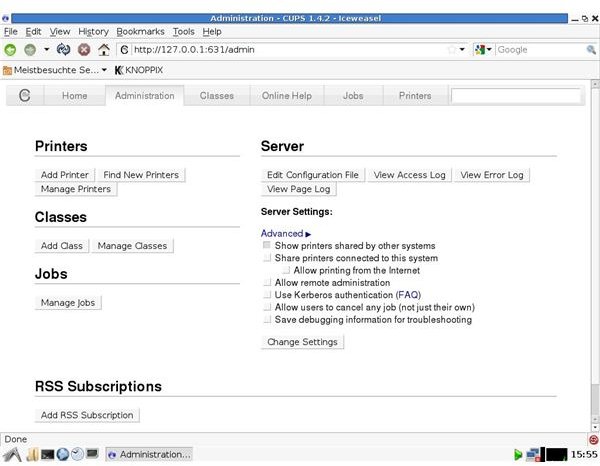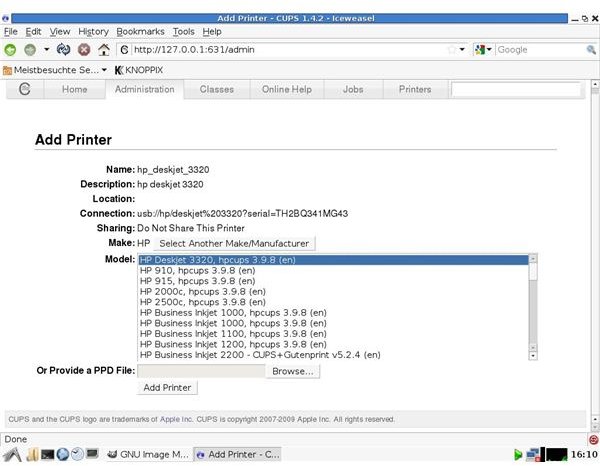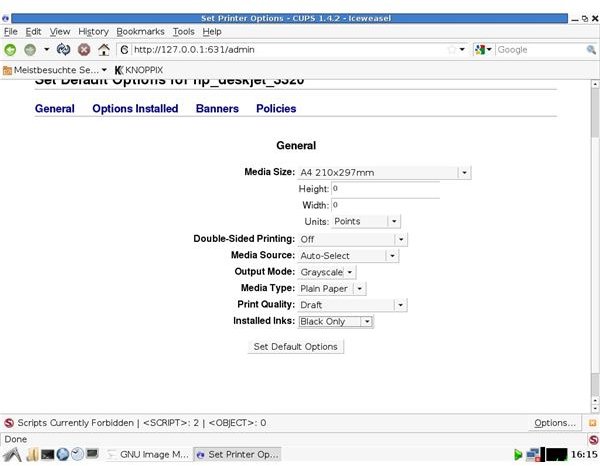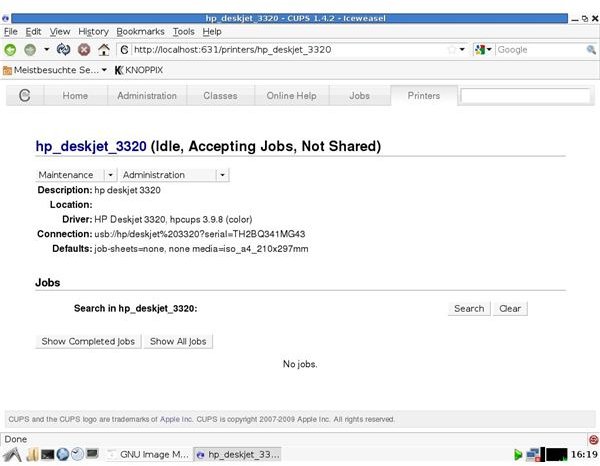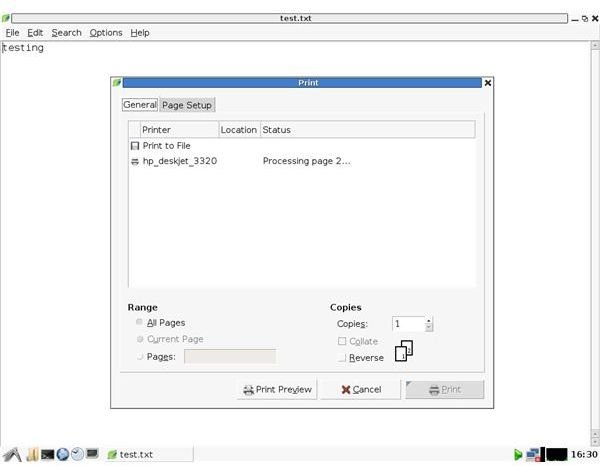Getting Started With Linux Printing
Preparing for Linux Printing: First Things First
One of the major differences between installing a printer under Microsoft (MS) Windows and Linux printing is the need to consider hardware compatibility. Almost any printer can be used under Windows, but the story is different with Linux compatible printers so you’ll want to do your homework before making a purchase. Although you can research online which models are compatible with your distribution, I find it easier to consult the actual distro I have installed because if the printer appears, the drivers are there. Some printers can be made to work with Linux using a postscript printer description (PPD) file, which, if available, can be obtained from the manufacturer’s official website. However, if you’re a newbie, I don’t recommend this. Also, keep in mind that it’s possible, in some cases, to use drivers that aren’t for your exact model. For example, under my Puppy Linux system, I run an HP Deskjet D1520 with drivers for the D1400 series.
The Pros and Cons of Linux Printing
Again, there’s probably not a printer on the market that can’t be used under Windows; Linux compatible printers aren’t as plentiful. Also, very low cost printers can be used under Windows, but you’ll be hard pressed to find a cheap printer that’s compatible with a Linux distro. A postscript printer such as an old LaserJet or PCL/Postscript printer such as modern and cheap LaserJets have been traditionally supported. However, I strongly suggest verifying printer compatibility before purchasing. All controller-based modems should always work under any Linux distro, but not all of them will. One advantage I believe Linux printing has is the greater control over settings that users have via the common Unix printing system (CUPS). Once when an ink cartridge became so low, I was prevented from printing, so I couldn’t use the very last drop. CUPS settings will not interfere with your ability to print because of a low cartridge. Also, the installation of a printer under Windows has literally made systems unstable if anything went wrong; I’ve never heard of such a problem with Linux printing.
GUI-Based Printing
Unlike command line printing which is fairly uniform across distros, graphical user interface (GUI) based Linux printing can vary greatly not only from distro to distro, but also from version to version within the same distro. While this might sound like a disadvantage, it isn’t once you learn the basics. Familiarity with GUI-based configuration and management of Linux compatible printers under one distro should serve you for setting up linux printers under any distro. Let’s go through the steps of “adding” and configuring a local printer under the Knoppix (6.2) distro.
1. From the desktop, click on Preference and go to Printer Configuration. Please note that in most other distros, you’ll go to System Administration for tasks such as setting up printers which actually makes more sense.
2. You’ll then see the CUPS administration page on which you’ll look for and click on Adding Printers and Classes (first screen shot).
3. Click on Add Printer (second screen shot).
4. Knoppix scanned and found my HP Deskjet 3320 printer on which I clicked to select (6th choice, not the 1st one listed). I then pressed Continue after which I was taken to the administration page where I clicked Continue again (third screen shot).
5. Connected Linux compatible printers should be selected in the list of drivers; this is also where you add a PPD file, if necessary and if you know how to use one (fourth screen shot). Click Add Printer.
6. You should now see your default settings for your printer (fifth screen shot). I changed the defaults. For example, I changed the default output mode from color to grayscale, print quality from normal to draft, and installed inks from black + color to black only.
7. Click Set Default Options. You’ll then receive a message that they’ve been successfully set and in a couple of seconds you’ll see another report letting you know that your printer is idle, accepting jobs and whether it’s shared or not (sixth screen shot).
Managing Linux Printers
Later if you need to change your settings, you would again go to Preferences, Printer Configuration, and click on the Administration tab under which you’ll see Manage Printers under a Printers section. The rest should be self-explanatory. Finally, I tested the newly configured printer by creating a simple text file to print out (seventh and final screen shot). If you don’t use Knoppix, you won’t see the GUI of the screen shots; however, they should serve to teach the basic concept for Linux printing across distributions regardless of the appearance and slightly different vocabulary of the GUI.
